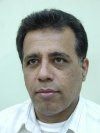| نویسندگان | B. Rousta Navi, M. Mohammadimehr, A. Ghorbanpour Arani |
|---|---|
| نشریه | Steel and Composite Structures |
| شماره صفحات | 753 |
| شماره مجلد | 32 |
| ضریب تاثیر (IF) | ثبت نشده |
| نوع مقاله | Full Paper |
| تاریخ انتشار | 2019-09-03 |
| رتبه نشریه | علمی - پژوهشی |
| نوع نشریه | الکترونیکی |
| کشور محل چاپ | ایران |
| نمایه نشریه | SCOPUS ,ISI-Listed |
چکیده مقاله
Vibration control in mechanical equipments is an important problem where unwanted vibrations are vanish or at least diminished. In this paper, free vibration active control of the porous sandwich piezoelectric polymeric nanocomposite microbeam with microsensor and microactuater layers are investigated. The aim of this research is to reduce amplitude of vibration in micro beam based on linear quadratic regulator (LQR). Modified couple stress theory (MCST) according to sinusoidal shear deformation theory is presented. The porous sandwich microbeam is rested on elastic foundation. The core and face sheet are made of porous and three-phase carbon nanotubes/resin/fiber nanocomposite materials. The equations of motion are extracted by Hamilton’s principle and then Navier’s type solution are employed for solving them. The governing equations of motion are written in space state form and linear quadratic regulator (LQR) is used for active control approach. The various parameters are conducted to investigate on the frequency response function (FRF) of the sandwich microbeam for vibration active control. The results indicate that the higher length scale to the thickness, the face sheet thickness to total thickness and the considering microsensor and microactutor significantly affect LQR and uncontrolled FRF. Also, the porosity coefficient increasing, Skempton coefficient and Winkler spring constant shift the frequency response to higher frequencies. The obtained results can be useful for micro-electro-mechanical (MEMS) and nano-electro-mechanical (NEMS) systems.
